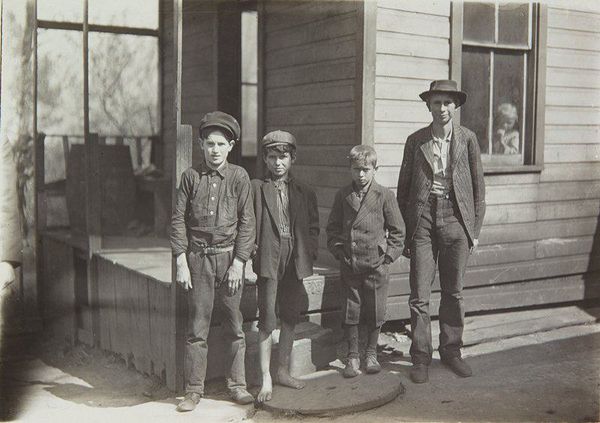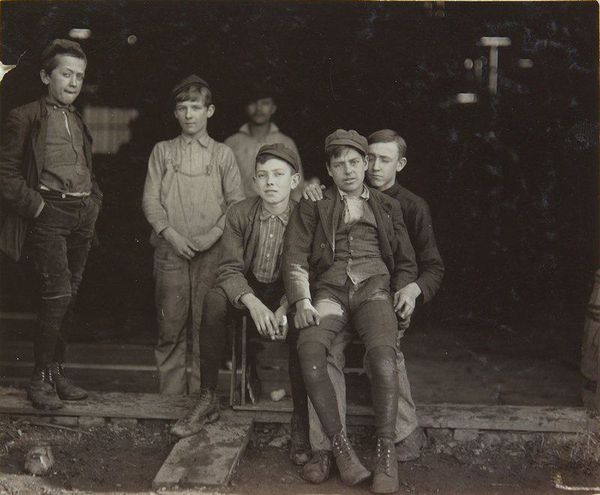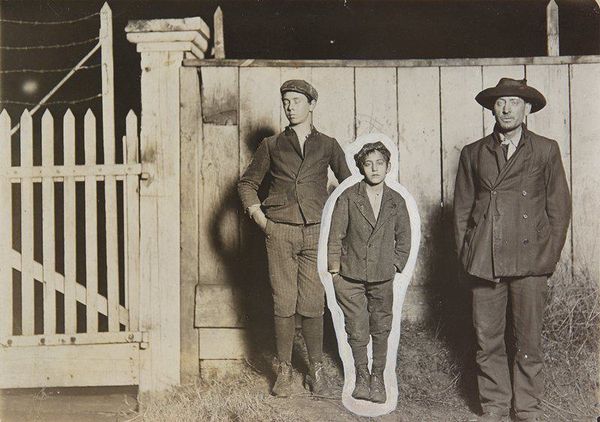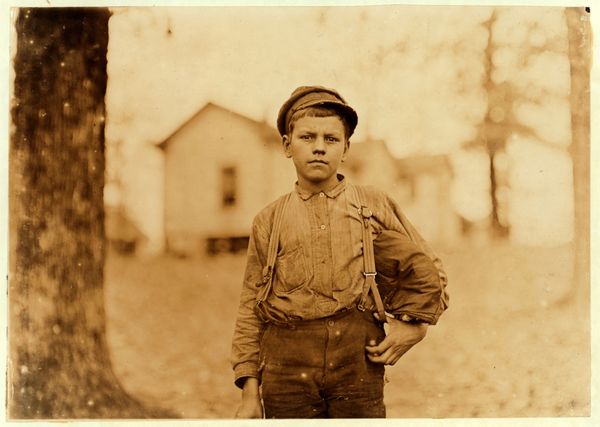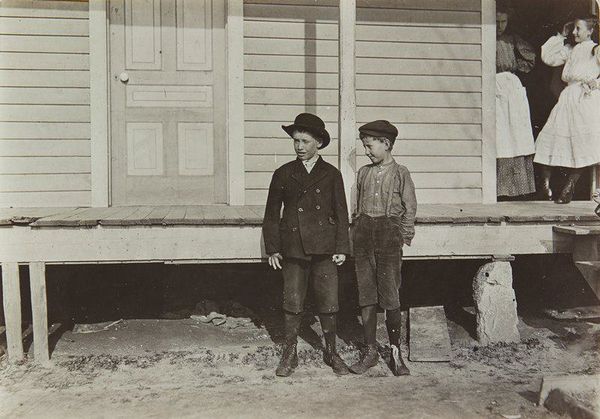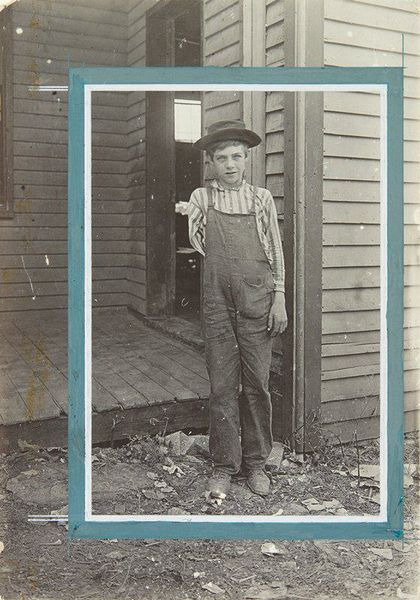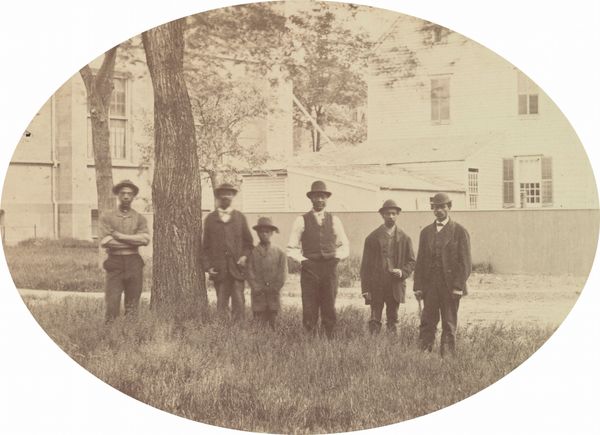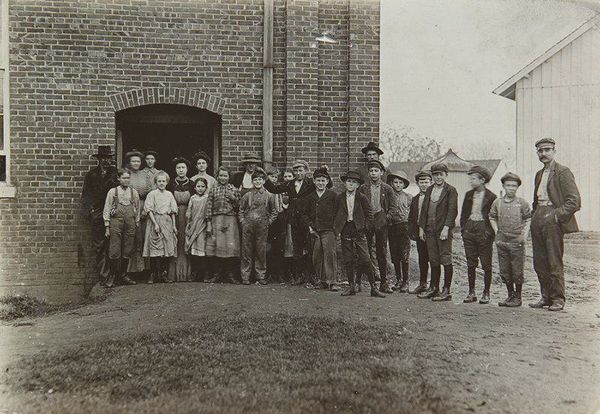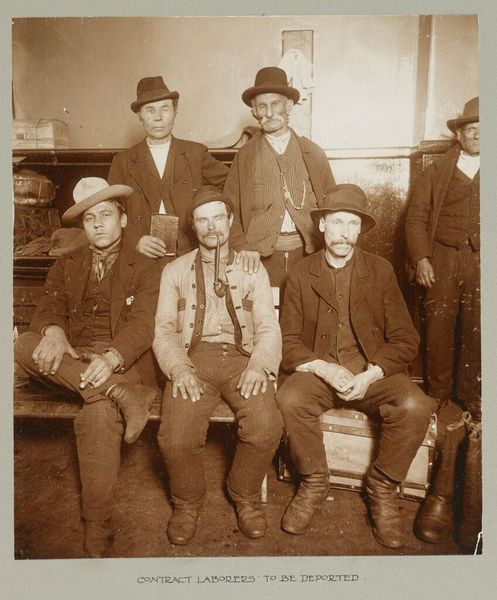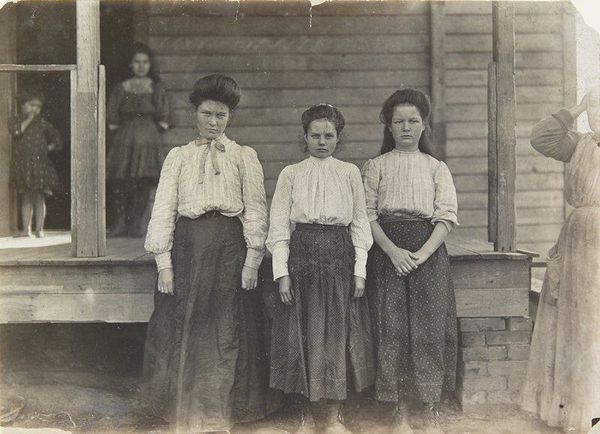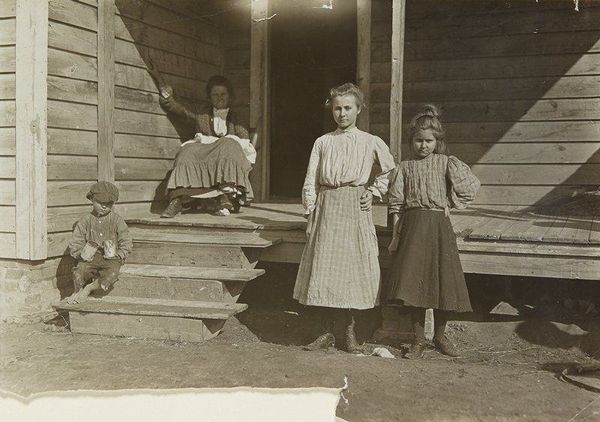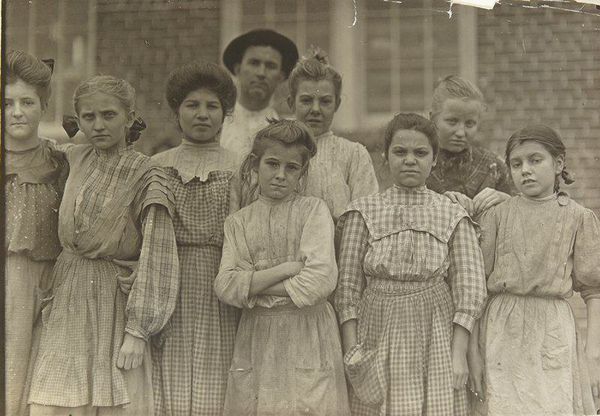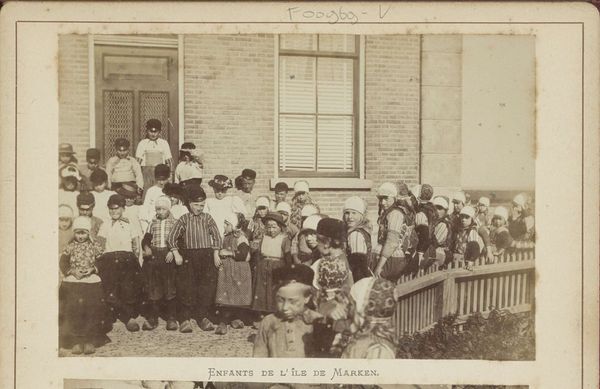
Dimensions: 4 5/8 x 6 11/16 in. (11.75 x 16.99 cm) (image, sheet)
Copyright: No Copyright - United States
Curator: Standing before us is an untitled photograph by Lewis Hine, created in 1908. It is a gelatin-silver print that captures a poignant moment. Editor: My first impression is the palpable weight of their circumstances. These aren’t just figures; there’s a collective sorrow radiating from the subjects, even in the rigidity of the composition. Curator: Hine's images, especially those from this period, serve as visual testaments, resonating as evidence. Notice how their soiled clothing almost camouflages with the muted brick behind them. What interpretations arise for you as you note their symbolism, hidden but so meaningful? Editor: Their clothes are literally painted with their labor, a stark emblem of class. They’re framed by this rigid architectural structure – brick and door, and it becomes like a prison backdrop. It is emblematic of systemic issues perpetuating child labor. How might period observers interpret the clothing in this time frame? Curator: This image embodies social realism, a school which focused on accurately portraying the plight and conditions of poor and working-class individuals. Child labor wasn't just a symbol; it was their reality, one that affected their psyche as well. Consider the boys' hats, typical of working children—their repeated presence signifying not fashion but necessity and belonging. Editor: That shared costume of the working class unites them as both individual entities but further expands to the children enduring the societal labor force. Also observe the adult male at the left standing alongside these children in striking dress in contrast to his wards, this is how labor issues take root. This feels inherently political; to look away is to ignore the crisis itself. Curator: You’ve articulated the layered elements of power. Hine's portraits achieve that delicate balance of representation; there's visual tension with these youths juxtaposed to the background characters—their faces reflecting more than just their age, but the gravity of their situation and life position as the breadwinners. This single snapshot contains that narrative through the art of composition, with great metaphoric meaning, like memory imprinting in a visual echo, that captures history itself. Editor: A perfect capturing that prompts introspection and dialogue concerning economic disparity and societal responsibility, so very needed still today. Thank you, that’s given me so much to think about in how the struggles echo even now.
Comments
minneapolisinstituteofart about 2 years ago
⋮
Lewis Hine was a documentary photographer, educator, and social reformer. Trained in sociology, Hine taught at the progressive Ethical Culture School in New York City before turning his attention to photography. As a photographer for the National Child Labor Committee (NCLC), Hine traveled the United States to document children in unsafe working conditions in factories, mines, fields, and city streets. Over ten years, he created an indelible record of the human cost of an exploitative labor market, documenting the tired faces of children at the end of their shifts, or even children mutilated by industrial machinery. These disturbing photographs were used in publications and presentations created by Hine and the NCLC, and ultimately promoted sweeping policy changes designed to protect children.
Join the conversation
Join millions of artists and users on Artera today and experience the ultimate creative platform.
